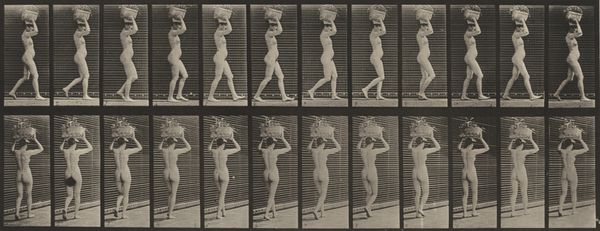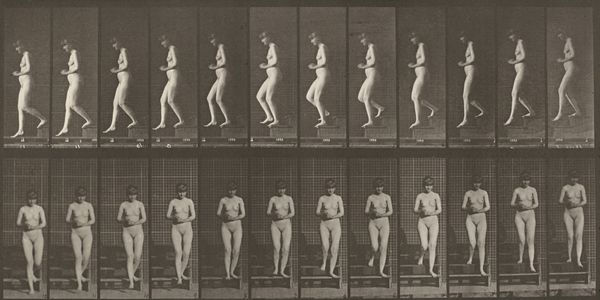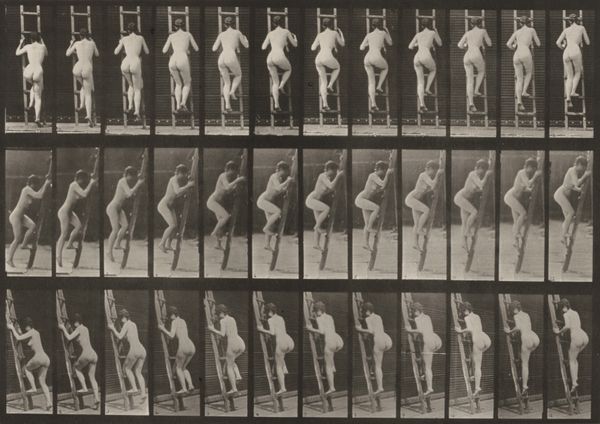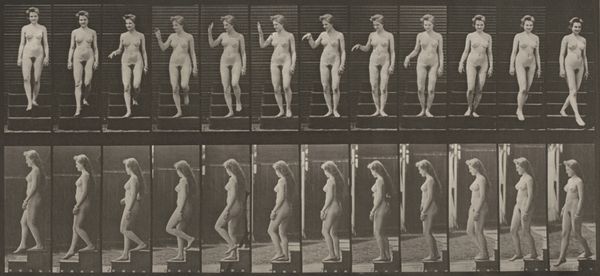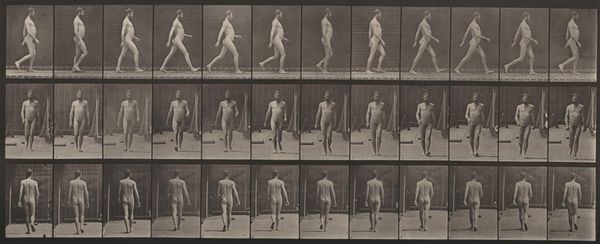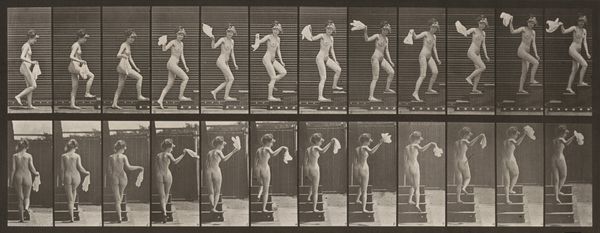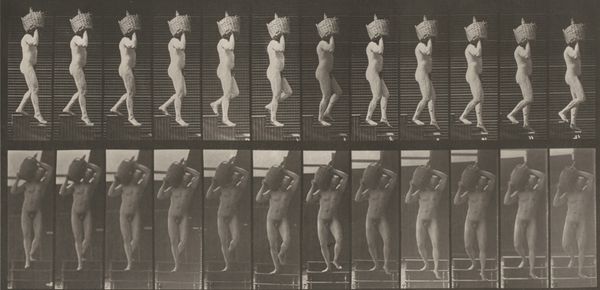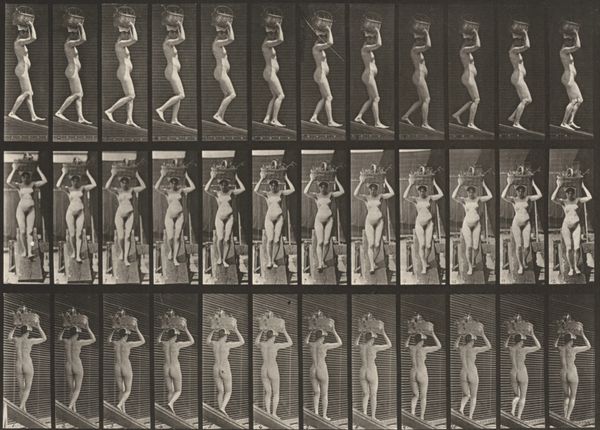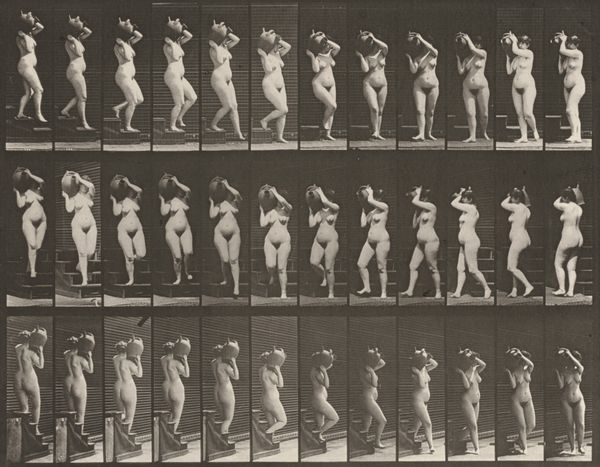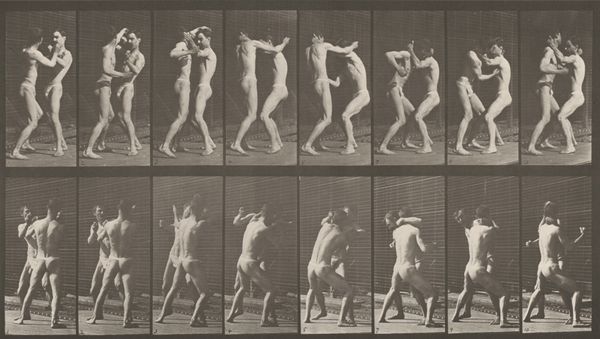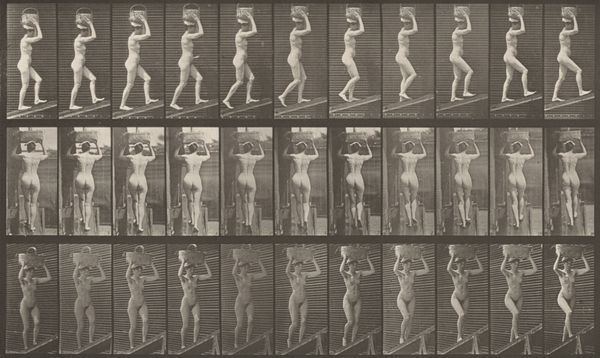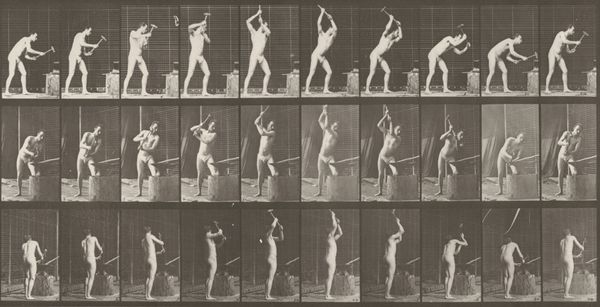
Plate Number 34. Walking and carrying a 15-lb. basket on head, hands raised 1887
0:00
0:00
#
sandstone
#
natural stone pattern
#
toned paper
#
worn
# print
#
sculpture
#
grainy texture
#
nude colour palette
#
derelict
#
carved into stone
#
wooden texture
Dimensions: image: 16.8 x 41.8 cm (6 5/8 x 16 7/16 in.) sheet: 48.5 x 61.2 cm (19 1/8 x 24 1/8 in.)
Copyright: National Gallery of Art: CC0 1.0
Curator: Eadweard Muybridge’s “Plate Number 34. Walking and carrying a 15-lb. basket on head, hands raised,” created in 1887. It presents a figure in sequential motion, quite clinical and detached, wouldn’t you agree? Editor: Detached, yes, but with an underlying tension. I find it somewhat dehumanizing, this stark portrayal of a body reduced to a set of mechanical actions, particularly given the loaded context of labour and gender. Curator: Precisely! Muybridge was invested in the scientific recording of movement, dissecting the human form into discrete units of time and space. Note the meticulous grid behind the subject, and the repeated capture of the same model, emphasizing objectivity. Editor: Objectivity, perhaps superficially. The history of photography is inextricably linked with power dynamics. Who is being observed, and for what purpose? This series reduces the woman to a mere subject for scientific study, stripped of agency and identity, with a heavy basket placed on her head. Curator: One might argue he was simply showcasing the mechanics of balance and motion. The raised arms, the shifting weight, the subtle adjustments. Observe the beautiful arc formed by her body as she transfers the weight of the basket through space. Editor: And yet, these ‘mechanics’ were, and continue to be, intrinsically connected to societal expectations and divisions of labour. Where and how can this “Plate Number 34” fit into feminist discourse? Are we analyzing the aesthetics or critiquing the objectification inherent within its photographic practice? The question stands: How can historical analysis of the body intersect with critical contemporary practices? Curator: Fair points. I will still stand with my idea that from a structuralist point of view, what draws me in is the very formal organization: the repetition, the sequencing, creating a visual rhythm that transcends the mere subject. It becomes about form and pattern rather than individual experience. Editor: Perhaps it’s that very tension between objective form and subjective experience that makes this image so compelling, so enduring, as we come away grappling with its social commentary within the semiotics. Curator: Indeed. The work reveals more when both voices contribute. Thank you! Editor: Thank you, it was important to see it in a different context.
Comments
No comments
Be the first to comment and join the conversation on the ultimate creative platform.
